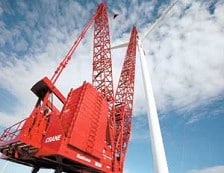Counting on the wind
.floatimg-left-hort { float:left; } .floatimg-left-caption-hort { float:left; margin-bottom:10px; width:300px; margin-right:10px; clear:left;} .floatimg-left-vert { float:left; margin-top:10px; margin-right:15px; width:200px;} .floatimg-left-caption-vert { float:left; margin-right:10px; margin-bottom:10px; font-size: 12px; width:200px;} .floatimg-right-hort { float:right; margin-top:10px; margin-left:10px; margin-bottom:10px; width: 300px;} .floatimg-right-caption-hort { float:left; margin-right:10px; margin-bottom:10px; width: 300px; font-size: 12px; } .floatimg-right-vert { float:right; margin-top:10px; margin-left:10px; margin-bottom:10px; width: 200px;} .floatimg-right-caption-vert { float:left; margin-right:10px; margin-bottom:10px; width: 200px; font-size: 12px; } .floatimgright-sidebar { float:right; margin-top:10px; margin-left:10px; margin-bottom:10px; width: 200px; border-top-style: double; border-top-color: black; border-bottom-style: double; border-bottom-color: black;} .floatimgright-sidebar p { line-height: 115%; text-indent: 10px; } .floatimgright-sidebar h4 { font-variant:small-caps; } .pullquote { float:right; margin-top:10px; margin-left:10px; margin-bottom:10px; width: 150px; background: url(http://www.dmbusinessdaily.com/DAILY/editorial/extras/closequote.gif) no-repeat bottom right !important ; line-height: 150%; font-size: 125%; border-top: 1px solid; border-bottom: 1px solid;} .floatvidleft { float:left; margin-bottom:10px; width:325px; margin-right:10px; clear:left;} .floatvidright { float:right; margin-bottom:10px; width:325px; margin-right:10px; clear:left;}
Kurt Rasmussen and Ron Sims are two men whose business thinking is carried by the wind and the billions of dollars in economic activity it is expected to drive during the next few years.
Rasmussen is the fourth-generation leader of The Rasmussen Group, a Des Moines construction conglomerate whose handiwork is evident from the bridges spanning Interstate 235 to the elegant pedestrian bridge at Gray’s Lake.
Sims is the director of wind services for Mullen Crane and Transport Inc., an Idaho company that recently opened a division in Des Moines.
Both men are accustomed to projects that are hatched by folks, like them, who think on a grand scale, folks who build bridges spanning the Missouri and Mississippi rivers and dig gold mines in remote areas.
Since last summer, they have been talking about the folks who harness the wind and convert it into electric power.
In November, they filed the paperwork to form Rasmussen-Mullen Energy Services LLC, a joint venture that will provide one-stop shopping for developers of wind farms.
“We want to build the new electrical highway,” said Rasmussen, who pointed out that his family members and their companies were involved in the original construction of I-235 as well as the erection of transfer towers when electricity was delivered under the New Deal’s Rural Electrification Administration.
Rasmussen and Sims say their company will provide “port-to-pigtail” services, meaning they will transport turbine blades and towers to the job site, build the road to get them onto the site, build the foundations to support the towers and turbines, and erect them, finishing the work to the point where the turbine is tied into the power grid.
And they have the mechanical muscle to back up that promise.
Tapping into the resources of their parent companies, Rasmussen-Mullen has 250 tractor and trailer rigs for transport, 50 dump trucks, mobile ready-mix operations to supply concrete and 250 cranes, including a $12 million all-terrain bruiser with a reach of 558 feet and a lift capacity of 1,350 tons. It is one of two such machines in North America, Sims said, who has worked in the wind industry for the last decade, primarily hauling wind turbine components and erecting them.
Sims and Rasmussen met by chance at a time when their companies wanted to expand operations.
Sims arrived in Greater Des Moines last August, scouting a location for Mullen Crane and Transport as well as a home for his family. He was directed to The Rasmussen Group, which is the holding company for its original bridge building business, Jensen Construction Co., and now includes nine additional companies that are involved in heavy hauling, demolition, concrete supply and other construction services.
Mullen Crane and Transport recognized that Iowa was a hub in the wind energy corridor that stretches from Texas to Minnesota and from the Dakotas to Michigan.
At the same time, Rasmussen was looking for ways to further diversify his company during a tough economy, a lesson he learned from his father, Jim, who began acquiring other companies during the economic downturn of the 1980s.
“My dad thought that by having some diversity in our business, when things are tough in one they might not be in another. That’s how we got so big,” Rasmussen said.
Sims said it made sense for the two companies to form a venture that took advantage of what each did best and applied it to an emerging industry based on what the wind does best in Iowa.
“It’s not that Iowa has the strongest winds, but it has the most consistent wind,” he said.
The Iowa Department of Economic Development (IDED) has a two-person team that promotes the state to companies wanting to locate wind-energy manufacturing services in Iowa.
Joe Jongewaard and Beth Govoni are project managers in IDED’s business development division.
“Iowa has the advantage of being at the nexus of the best wind resource in the United States and the load demand; we are where those two things meet,” Jongewaard said. “That is the magical thing that attracts companies to Iowa.”
The numbers bear him out. In 2008, 47 percent of all wind turbines erected in the country were within 500 miles of Iowa. The state leads the nation in the percentage of electricity generated from wind and is second to Texas in amount of installed power, with 22 wind farms and 2,136 turbines in operation; six more wind farms are in the planning or construction phase.
In addition, MidAmercan Energy Co. recently won regulatory approval for another wind farm that could add 400 turbines to the grid and generate 1,001 megawatts of electricity. The utility already is the largest rate-regulated utility in the country in terms of wind farms in operation.
In the last four years, nine manufacturers of turbines, blades and towers have launched operations in the state. More than 200 Iowa manufacturers make wind turbine components.
The recent growth in the wind industry traces its roots to a 1983 Iowa law that required utilities to generate a percentage of their power from sources other than carbon fuels. The standard is called a renewable portfolio standard. Such standards could find their way into federal law as Congress debates an energy bill.
“We led the nation in being the first state in having what is called a renewable portfolio standard,” Jongewaard said. “What that really says is that Iowa has the public policy that supports wind power. We are steps ahead, and when you come to the game later, even if you come with other things, you’re still not looked at like the leader.”
The Iowa wind industry received a boost when California-based Clipper Windpower plc opened a turbine manufacturing facility in 2006 in Cedar Rapids. Since that time, Iowa has attracted other manufacturers of turbines, blades and towers. The state joins Texas as being the only two states in the country that manufacture all of the main components of a wind turbine.
In addition, there are state and federal incentives for manufacturing wind-energy components.
Jongewaard downplays their significance.
“Incentives run out, but logistics don’t run out, a productive work force doesn’t run out,” he said.
It should be noted that Jongewaard and Govoni traveled to Cedar Rapids last week on recruiting mission to woo another manufacturer of wind turbine components to the state. This was the domestic company’s second trip to Iowa.
As for the future, a recent study projects that approximately $5.7 billion in wind generation projects will be constructed each year over the next five years within a 600-mile radius of Iowa. Another study suggested that 10,000 jobs could be created over that same time in the wind industry.
Those are numbers that have caught the attention of Rasmussen and Sims and leave Jongewaard wondering why it took their companies “so long to find each other.”
Sims said it became obvious while he worked in the industry that the developers of wind farms divvied the work of constructing the farms among a variety of contractors, leading to delays and work that had to be repeated because it wasn’t up to standards.
“What we’ve seen over the past few years is that one of the biggest challenges for developers is coordinating all of these activities, from picking up components at the manufacturer’s site or port of entry in a lot of cases, doing the site development, preparing the roadways, the pads, the concrete foundations for the towers, getting the trucks to the site, getting cranes there, doing the erection, everything we call our port-to-pigtail concept,” Sims said.
He noted that a crawler-type crane has to be dismantled, transported and reassembled for each turbine that is erected.
Rasmussen-Mullen will focus on work available in Iowa, but will venture to other states if needed. “We have a long history of success of focusing on what we do best,” Rasmussen said. “It’s a good business strategy to focus in on what you do very well.”









